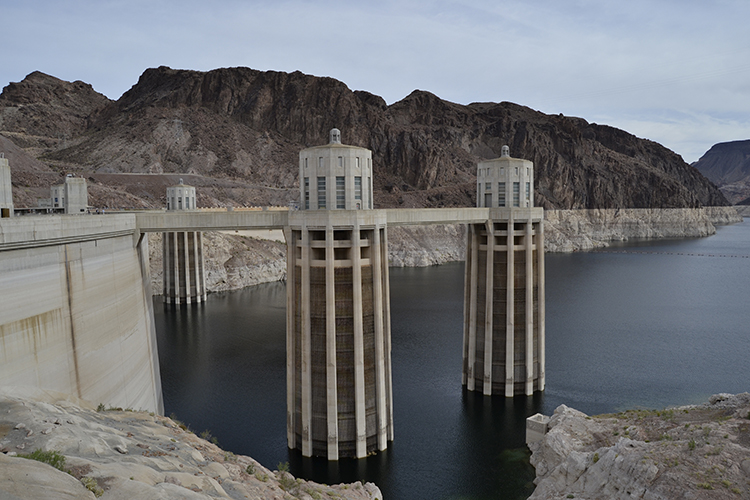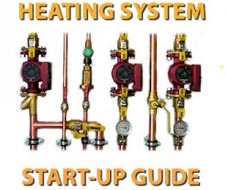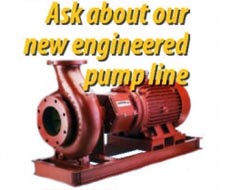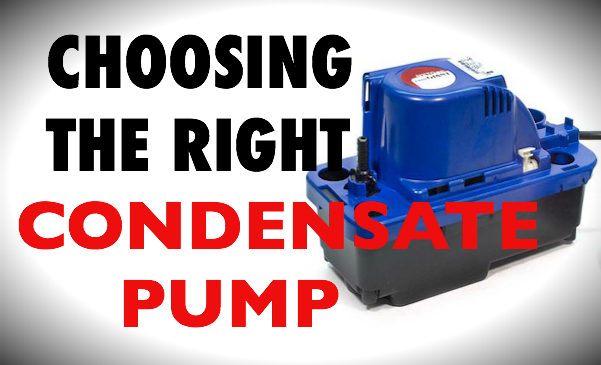-
Pumps Make It Possible: The Hoover Dam
May 17, 2017Welcome to the first edition of “Pumps Make it Possible,” our new recurring feature in which I, Inspector Pumphead, will talk about the different aspects of human life and society that would be impossible without pumps. Many of these things happen without people knowing it. In fact, the pump is actually the second most-used piece of machinery in the world, after the motor. In case you missed it, here’s the introductory blog: Pumps Make It Possible: An Introduction. Pumps Make the Hoover Dam Possible With outdoor recreation season starting for many of our nation’s parks and landmarks, I thought it would be a good idea to tackle a landmark that is made possible by pumps. Thus, In today’s edition, I’ll examine the Hoover Dam. (Incidentally, lottery applications for many U.S. Recreation activities across the country are now open. I highly encourage you to apply! See here: https://www.recreation.gov/marketing.dogoto=acm/faqs/lotteries.htm) The Hoover Dam is one of the most famous man-made constructs in the world. It serves as reservoir, flood-prevention insurance, an irrigation source, the supplier of hydroelectric power to millions of Americans. It is a useful transportation point between Arizona and Nevada. Millions of tourists from around the country, and indeed, the world, visit the Hoover Dam every year. At the time of its construction, it was the biggest dam and the largest concrete structure in the world. A marvel of engineering, planning, manpower and resource management, the Hoover Dam produces over 4.5 billion kilowatt hours to serve the electrical usage of over 8 million people in Arizona, Nevada and Southern California, according to the Power Authority. Would the famous Las Vegas Strip light up the same way without the Dam Lake Mead, the reservoir that was created during the construction of the dam project can hold up to 10 trillion gallons of water at full capacity, according to some estimates. Imagine if the Dam broke So the importance and awesomeness of the Hoover Dam is clear. Heavy duty industrial pumps play an integral role in the operation of the dam. Pumping stations on Lake Mead, each with over 30 pumps, draw water from the lake to transport to the dam. These pumping stations are especially critical when the water level in the lake is low, as happened during drought periods in 2015. Another pumping station is currently being built at an estimated cost of $650 million, due to be completed in 2020. This just shows the importance of pumps in keeping one of America’s most important pieces of infrastructure operating and the value that pumps have generally. In the future, we will tackle how other landmarks and important pieces of infrastructure are powered by pumps. If you have any suggestions for future #MadePossibleByPumps projects, be sure to comment or email! Pump Products application engineers are standing by to help you find the right pump, as well as to provide price quotes, availability and shipping information. Call our toll free number 1-800-429-0800.
-
Pumps Make It Possible: Pumping Stations Combat Drought
December 7, 2016Pumps make so many things possible that no one ever thinks about, including getting your drinking water. People often take for granted how important pumps and pumping stations are to getting municipal water. A pertinent example comes right from our own backyard. As some of you might know, PumpProducts.com is nestled in Westwood, New Jersey, a bucolic location in the northern part of the state. Westwood’s governing county is Bergen County and as is the case with most of North Jersey, we rely on the Wanaque Reservoir to receive our water. Recently, due to a lack of rainfall and unseasonably warm weather stretching from summer into fall, New Jersey has been suffering from a drought. As a result, the Wanaque Reservoir has been far short of its usual capacity over the past few months. According to The Bergen Record: “The Wanaque Reservoir and its backup Monksville Reservoir, which provide drinking water to more than 3.5 million people in North Jersey, had been so depleted by the drought that they hovered at just 45 to 47 percent of combined capacity for much of the fall. By Monday, they were back up to a combined 52 percent of capacity – an improvement, but still well below the 70 percent of capacity that's typical for this time of year.... Even with several days of rain recently, northern New Jersey remains at a rain deficit over the past 90 days. Morris County is worst off, with a deficit of nearly 5 inches over the past three months, or 38 percent below normal. Passaic County – where the Wanaque Reservoir is – has had a deficit of 4 inches, or 30 percent below normal. Bergen County has seen nearly 3 inches less rain than usual, about 22 percent below normal.” Obviously, drought can be devastating to both a human population and an area’s natural ecosystem. Crops wither and decay, animals die of thirst and municipalities often enforce strict water rationing. Water plays such an integral role in the structure and conduct of life, one that is underappreciated. A drought’s impact is measured not only in inches of water but also in the adverse impact. Droughts cause a “domino effect” that touch many different industries. That’s why pumping stations are so important. The heavy duty industrial pumps are key to moving the water from the reservoir into the water supply system. Lift pumps or centrifugal pumps are often the type used in pumping stations. Balancing the level of stream flow with the needs and demands of many municipalities, businesses and people is quite a tricky process. Without pumps, we would never get the food or drinking water so critical to human survival. So let's all take a moment to think about our pumps and thank them!
-
Pump Products’ Home Heating System Start-Up Check List
September 12, 2014Each year, when heating season rolls around, Pump Products staff get a flurry of calls from homeowners who fire-up their home heating systems and deliver a jolt to their system that results in leaks, circulator pump failure or total breakdown. For those who haven't maintained their hydronic heating system all spring and summer, our Product Experts offer the following tips to ensure a safe start-up and maximize the life of your system: (more…)
-
Pump Products Has High Performance Zoeller Grinder Pumps That Get the Job Done
August 22, 2014The dreaded call back. For plumbing contractors it's a recurring nightmare. That's why many of our customers in the plumbing and contracting trades opt for Zoeller Grinder Pumps for applications with chronic clogging issues. Zoeller grinder pumps are engineered to cut through the tough solids that jam ordinary sewage pumps and lead to repeated call backs. The Zoeller grinder pump line ranges from small indoor and outdoor residential systems using a fractional HP grinder, to larger commercial and industrial pumps for applications that require the industry standard 2 HP grinder. (more…)
-
Pump Products Adds Armstrong 4700 Series Engineered Pumps to Inventory
May 16, 2014Pump Products has been steadily expanding its inventory of premium hydronic pumps and accessories over the past year and we recently added Armstrong 4700 Series Vertical Multistage Pumps to our product offerings. The new line is part of our response to a steady demand from commercial, industrial and municipal contractors and maintenance supervisors requiring pumping equipment expertly sized to specific systems. "In striving to be the contracting industry's one-stop shop for precision pumping equipment, we are configuring industrial-grade pumps by Armstrong, Bell & Gossett and other leading manufacturers to exact specifications at discount prices," says General Manager Ed Drejman. "Add free shipping to the mix, and that's a deal that's hard to beat." (more…)
-
Condensate Pump Buyers Guide
October 7, 2013Dehumidifiers, drinking fountains, soda machines and ice makers all produce condensate that will accumulate and cause damage unless it is removed. Large climate control and refrigeration systems, often produce large volumes of condensate requiring continual draining and disposal. View our condensate pump video Video used courtesy of Steve Markee Condensate pumps are designed to move the water produced by moisture-prone equipment to a holding tank before routing it to a sewer or drain. The holding tank collects condensate liquid until it rises to a level that raises an internal float switch which activates the pump until the liquid level in the tank is lowered. Condensate pumps are available in centrifugal, peristaltic and other styles and range in size from small fractional horsepower units to large industrial pumps that recycle condensate water within a system. The output of small condensate pumps is usually routed to a sewer or drain. Because condensate water can be very hot and contain acids and other contaminants it may require careful handling and disposal according to local regulations. When correctly installed and maintained condensate pumps usually provide years of trouble-free service. Pump Products has an inventory of quality condensate pumps and accessories suitable for use in a wide range of applications. Choosing A Condensate Pump The first step in choosing the right condensate pump is to determine if your application is subject to local condensate handling and disposal regulations. Select a model that operates within these guidelines. Figure out the lift requirement for the pump by identifying where the pump will be mounted and where the discharge point will be. Condensate flow will decrease in accordance with the height it must travel until maximum, or "shut-off" lift is reached. Select a pump with a maximum lift rating that is suitable for your application. Check your equipment service manual to determine the condensate output and choose a pump with sufficient capacity. As a general rule, the output flow of the pump should be at least double the input rate from the appliance. Ascertain your voltage requirements. Most pumps are available in 115 or 230V. Some commercial grade pumps are available in 460V. If property damage or personal injury can result from an inoperative or leaking pump, choose a condensate pump with an alarm or auxiliary switch backup system or install one with your pump. TIPS Unplug the pump and clean out the reservoir at the beginning and end of each heating season. Use a commercial algaecide and follow manufacturer’s instructions. Never pump flammable liquids Do not handle unit with wet hands or while standing in water Do not expose pump or discharge to freezing temperatures For detailed specs, manuals and reviews of the condensate pumps we stock and ship nationally, visit our product pages at www.pumpproducts.com or call us for details: 1-800-429-0800.
-
How To Repair a Pressure Booster Pump
August 21, 2011Pump Products sister business Pump Express goes into the field to repair and replace a pair of leaking booster pumps located in the Newark Museum. Pump Products is a stocking distributor and national service center for the world's leading manufacturers of industrial pumps and pump parts. Through our determined and factory trained professionals, we are able to provide our customers with the most innovative and cost effective products on the market today. Whether you need system advice, pump parts or a new pump, our dedicated pump experts will be able to help you with even the most complicated pump system issues. With over 500,000 sq ft of fully stocked warehouse space, we are able to ensure quick delivery times. Phone: 1-800-298-4100 Web: https://www.pumpproducts.com/index.php













